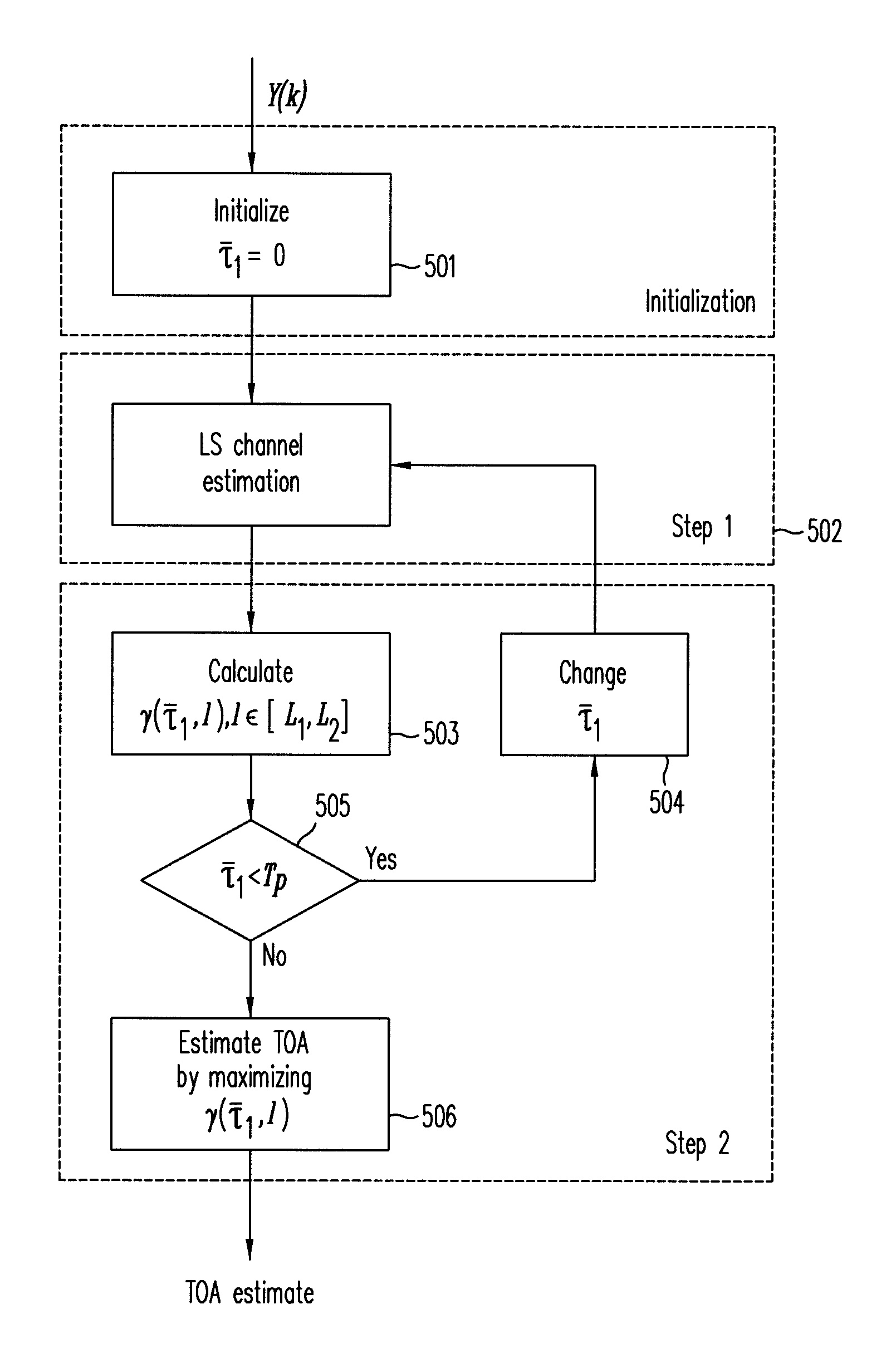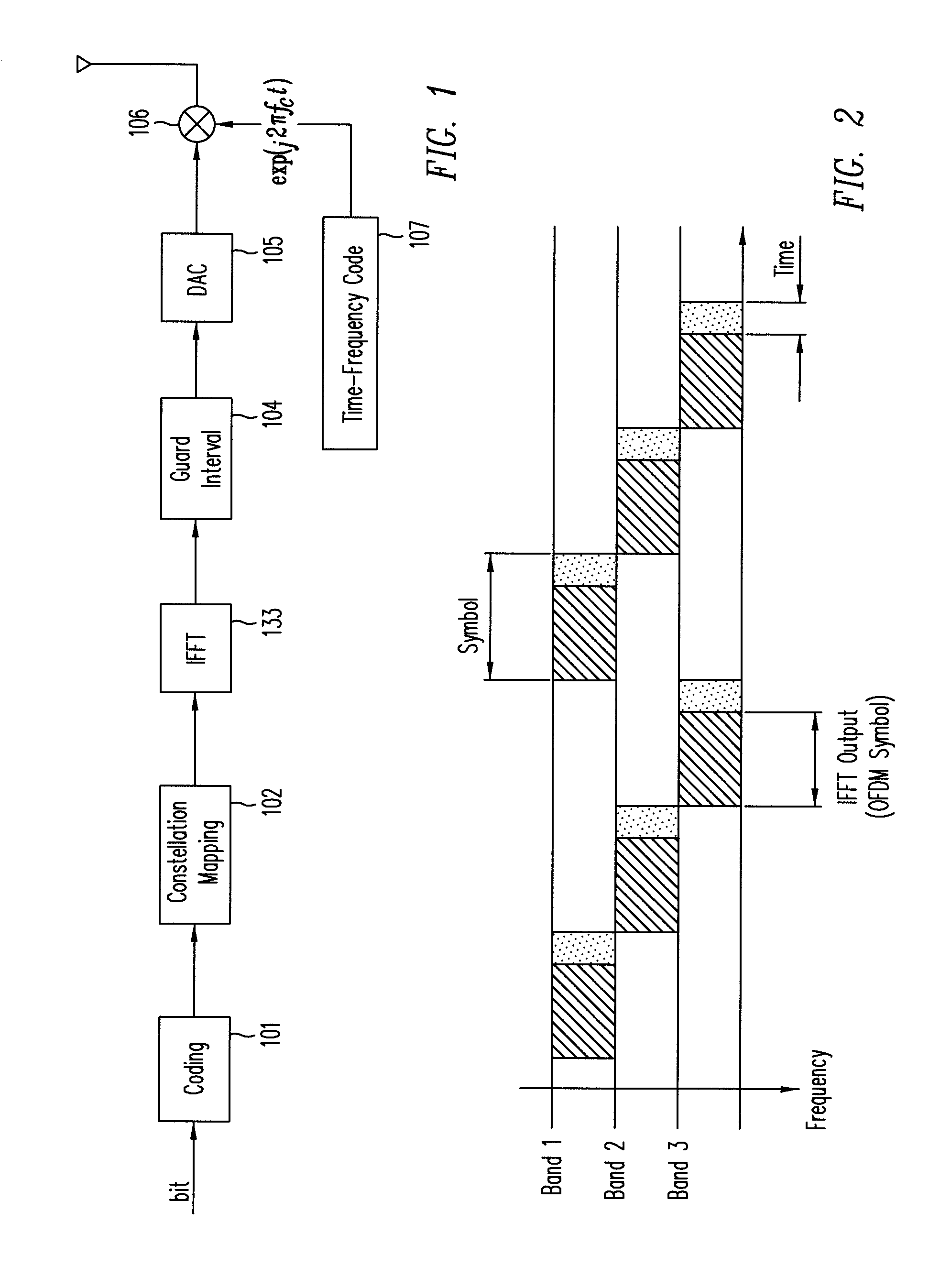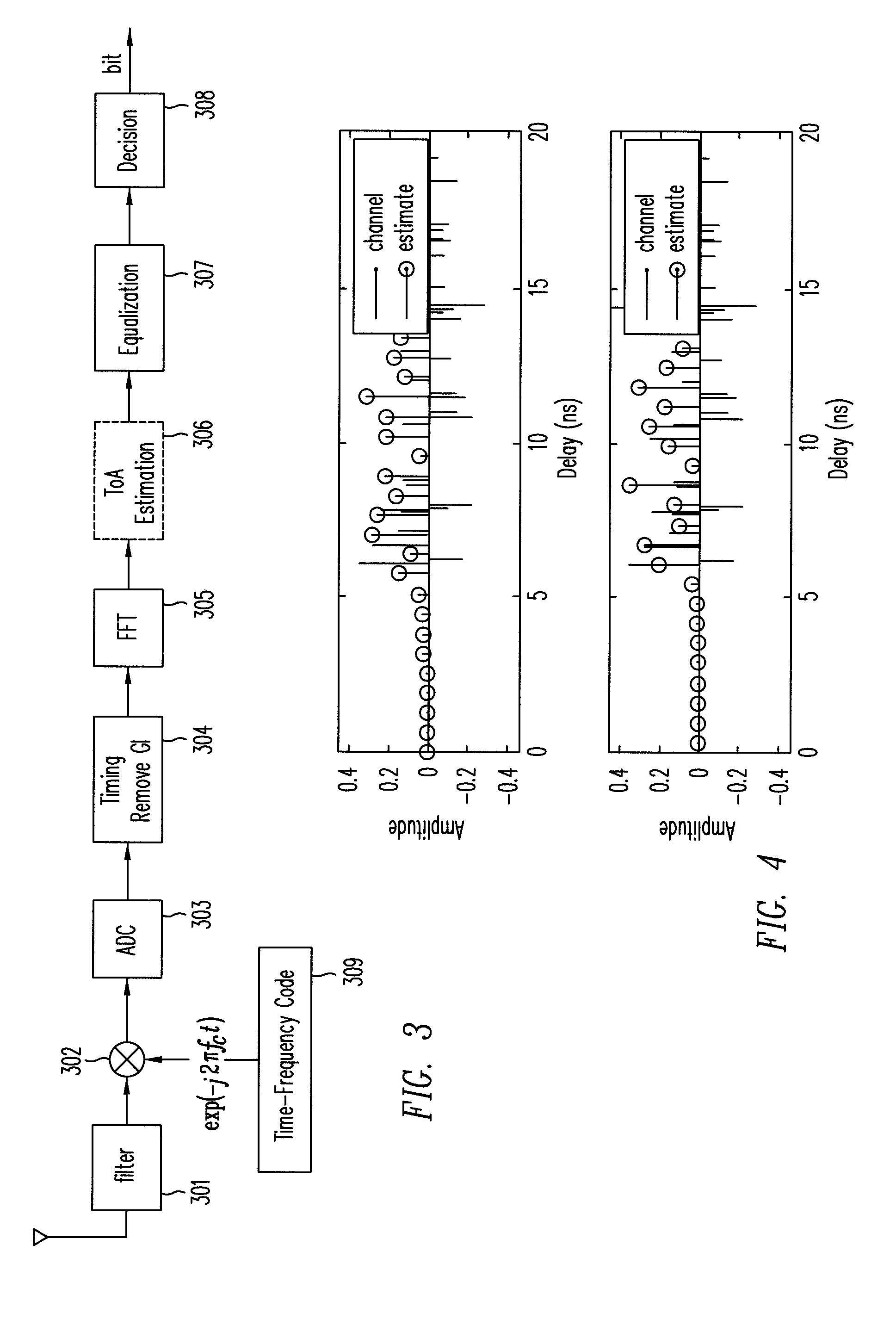Method and system of time-of-arrival estimation for ultra wideband multi-band orthogonal frequency division multiplexing signals
a multi-band orthogonal frequency division multiplexing and time-of-arrival estimation technology, applied in the field of data communication, can solve the problems of inability to accurately estimate the estimated value of multi-path channels, and inability to meet the needs of multi-path channels in real time, so as to achieve the effect of maximizing the likelihood and improving the resolution of the toa estimation resul
- Summary
- Abstract
- Description
- Claims
- Application Information
AI Technical Summary
Benefits of technology
Problems solved by technology
Method used
Image
Examples
Embodiment Construction
[0029]FIG. 1 shows the architecture of a MB-OFDM transmitter. As shown in FIG. 1, information bits are encoded (step 101), mapped to a constellation for symbol encoding (step 102), and multi-carrier modulated at baseband using an IFFT operation (step 103). The basic OFDM symbols are appended with guard intervals (GI, step 104). The processed symbols are then converted from digital to an analog form (D-A, step 105). The baseband signals are then carrier-modulated on one of the B frequency bands according to a frequency hopping pattern (step 106) under control of time frequency code generator 107.
[0030]The OFDM symbols are transmitted on B frequency bands, [N1, ω0, M1ω0], . . . , [NB-1ω0, MB-1ω0] and [NBω0, MBω0] where ω0 is the smallest spacing between subcarriers, and where Nb, Mb are integers, for b=1, . . . , B, so that a total of N subcarriers are formed in the B frequency bands, where N is given by:
[0031]N=∑b=1BMb-∑b=1BNb+B.(1)
[0032]Symbols ωk, k ε[1, N] can be used to further...
PUM
 Login to View More
Login to View More Abstract
Description
Claims
Application Information
 Login to View More
Login to View More - R&D
- Intellectual Property
- Life Sciences
- Materials
- Tech Scout
- Unparalleled Data Quality
- Higher Quality Content
- 60% Fewer Hallucinations
Browse by: Latest US Patents, China's latest patents, Technical Efficacy Thesaurus, Application Domain, Technology Topic, Popular Technical Reports.
© 2025 PatSnap. All rights reserved.Legal|Privacy policy|Modern Slavery Act Transparency Statement|Sitemap|About US| Contact US: help@patsnap.com



